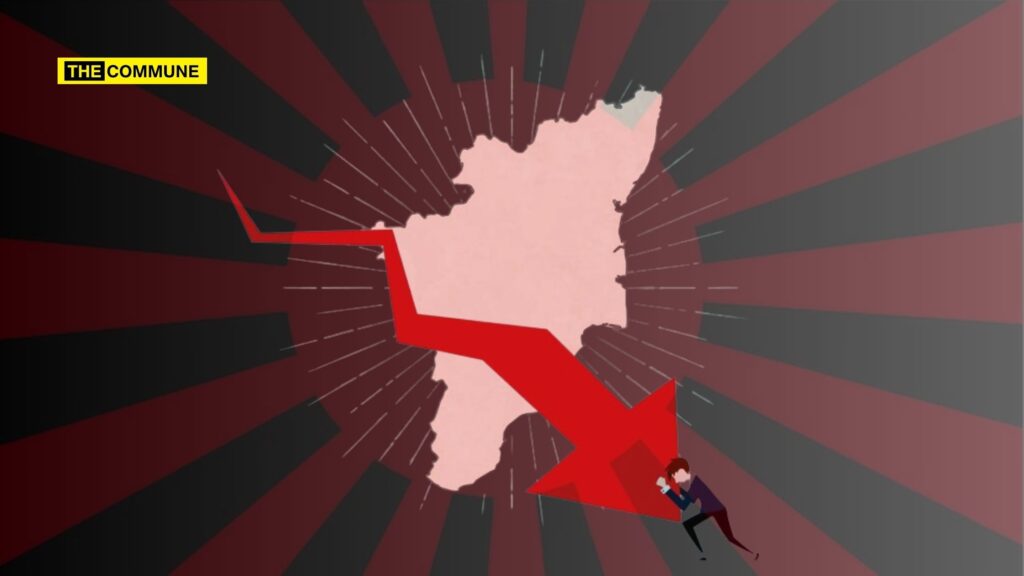Tamil Nadu benefitted from a high base rate in the economy till the 1960s before the Dravidian parties’ rule. The state had a high literacy rate, economic levels, and per capita income among major states. Let’s look at some of the data points over decades to understand this better.
In the initial decades, Tamil Nadu had worsened its performance and played catch-up later. However, states like Haryana, Gujarat and Karnataka have done significantly better than Tamil Nadu – Noteworthy that there was No Dravidian model at play here.
The high base effect had helped the State grow its economy, bigger than its compatriots. Laggard in the first decade (the 70s) and also in the 2000s under Dravidian rule. Most of Southern states doing better than Tamil Nadu for the same period.
This table compares Tamil Nadu’s performance vis-à-vis Gujarat over decades after the State came under the rule of the Dravidian parties. Gujarat has done much better than Tamil Nadu here. This also reflects Tamil Nadu’s relative position amongst major states having high NSDP (above ₹5 lakh crores. NSDP)
Amongst the top 13 states with NSDP (current prices) above ₹7 lakh crores (Except for Odisha & Bihar, all highly populous states covered), Tamil Nadu has been maintaining its relative position. Initially, the Dravidian rule worsened the state’s relative position – a tale of lost opportunities.
Kerala, Karnataka, and Haryana have shown better performance than Tamil Nadu; Gujarat is nearly at par, and Maharashtra shows lower performance than Tamil Nadu over the same period.
Per capita income 2021-22 (Current prices) reflects the relative standing of Tamil Nadu against major states. Tamil Nadu at 5th position with Telangana, Karnataka, and Haryana in a better position. Gujarat is nearly at par and Kerala is closely behind.
Against 1960-61, Tamil Nadu’s relative position is constant amongst major states (above ₹7 lakh crores). Southern states of Telangana and Karnataka going beyond Tamil Nadu; Maharashtra and West Bengal are seeing lower performance comparatively.
Performance of the rest of the Southern States conveys that Tamil Nadu has lost its pre-eminent position of the 1960s and has been a laggard against the best performers, under the misrule of the Dravidian parties. Moreover, the State has also not ensured equitable growth. Amongst states with high consumption inequality in India, it is higher than the national average. Dravidian misrule resulted in not harnessing its full potential by not uplifting marginalised people and victimising certain communities due to its casteist approach to governance.
Another key parameter influencing economic growth is its literacy rate. Tamil Nadu had a 36.4% literacy rate in 1961 pre-Dravidian parties rule, 3rd amongst major states. Tamil Nadu known for its high literacy rate had the benefit of a high base rate and stood out in 1961 itself.
This base effect led Tamil Nadu to reach an 80.1% literacy rate in 2011 to make it to the 4th position. Maharashtra’s growth in the same period is better than that of Tamil Nadu. Overall, data points from 1960-61 onwards reflect a different take on Tamil Nadu’s position. More of a tale of lost opportunities under the Dravidian parties, but especially the DMK.
Source: MOSPI and Economic Survey
(This article based on the X thread by Baskar – all images are from the same thread)
Baskar is a finance professional having keen interest in current affairs and Indian culture.
Subscribe to our channels on Telegram, WhatsApp, and Instagram and get the best stories of the day delivered to you personally.

